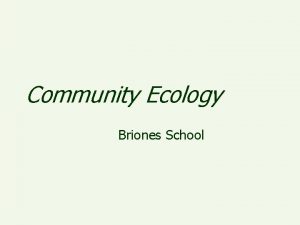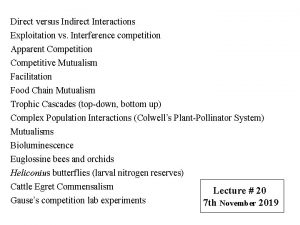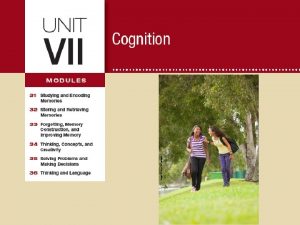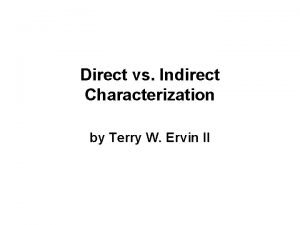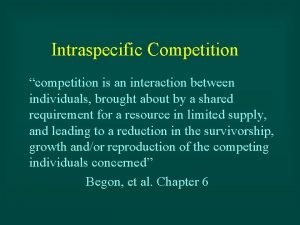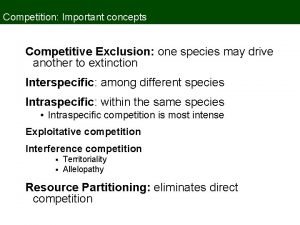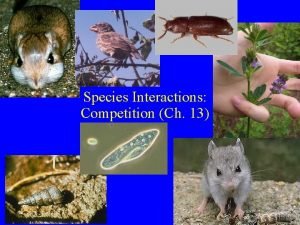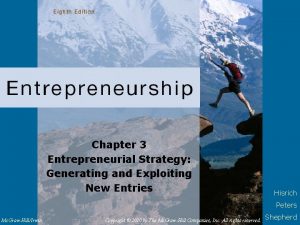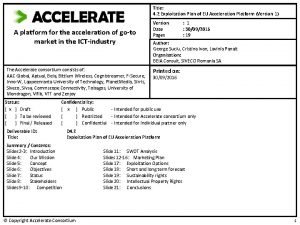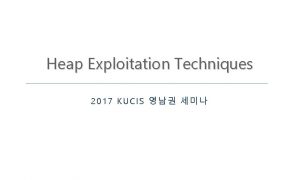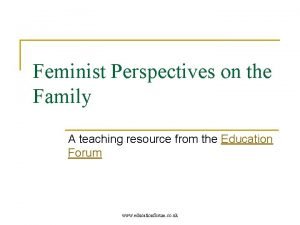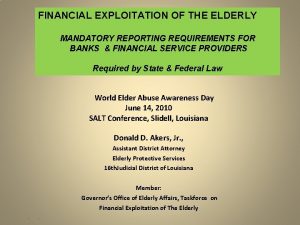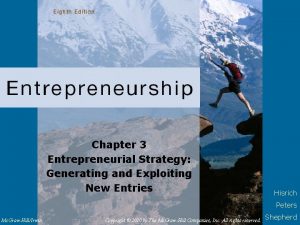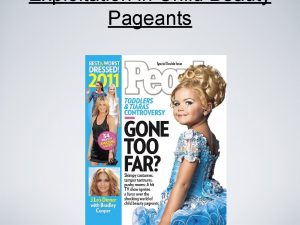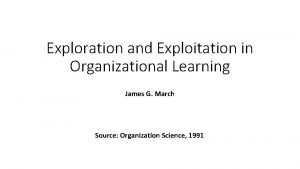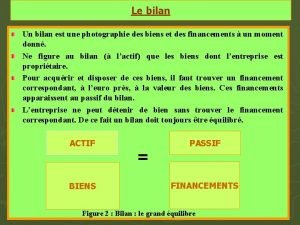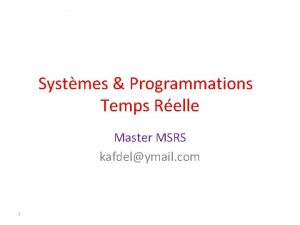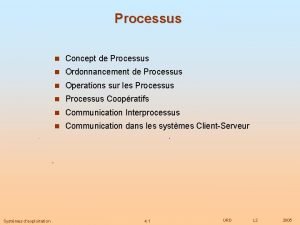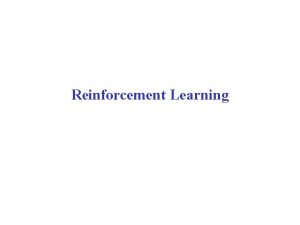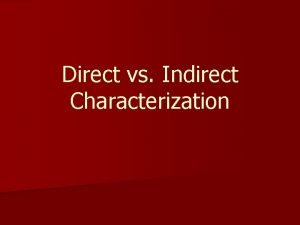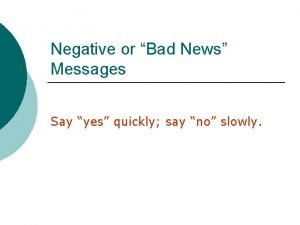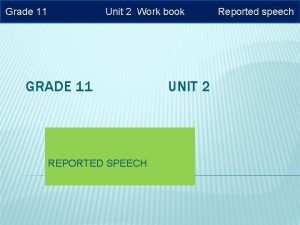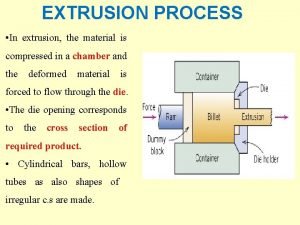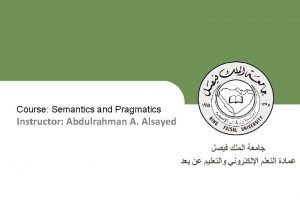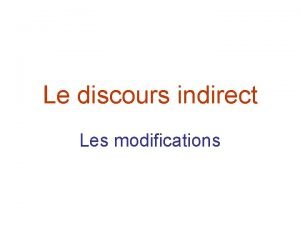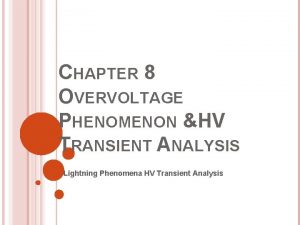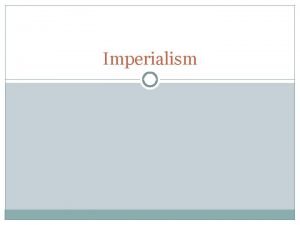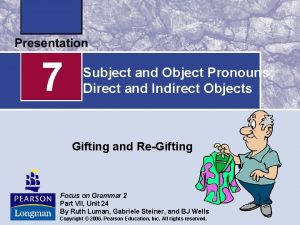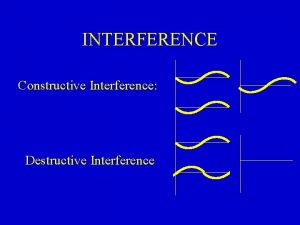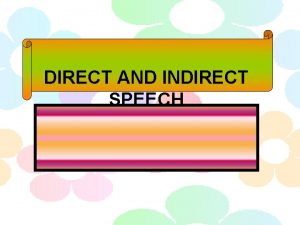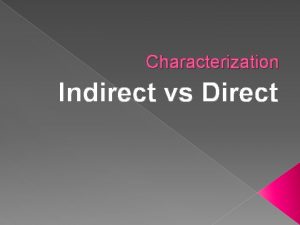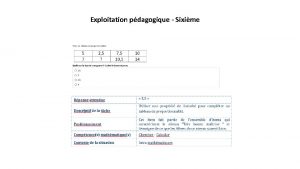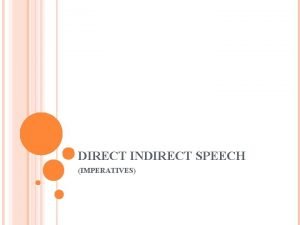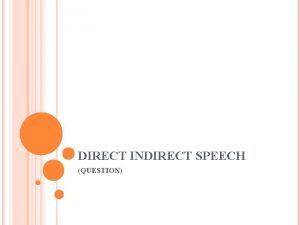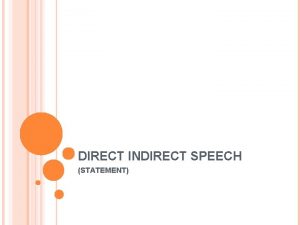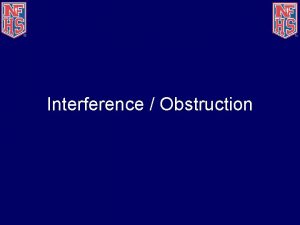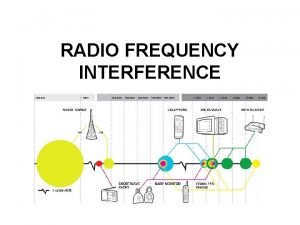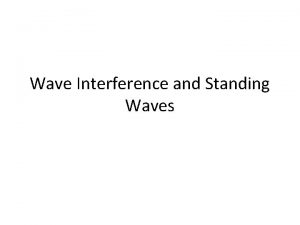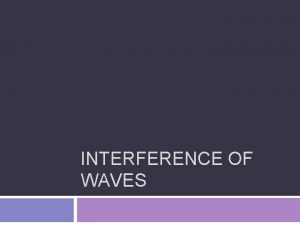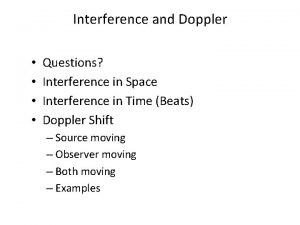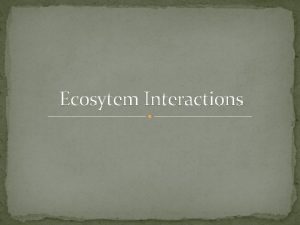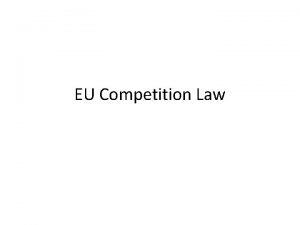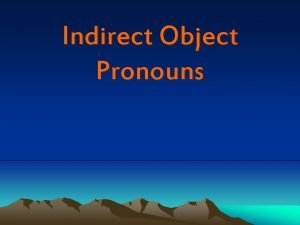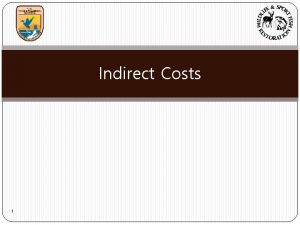Direct versus Indirect Interactions Exploitation vs Interference competition


















































- Slides: 50

Direct versus Indirect Interactions Exploitation vs. Interference competition Apparent Competition Competitive Mutualism Facilitation Food Chain Mutualism Trophic Cascades (top-down, bottom up) Complex Population Interactions (Colwell’s Plant-Pollinator System) Mutualisms Bioluminescence Euglossine bees and orchids Heliconius butterflies (larval nitrogen reserves) Cattle Egret Commensalism Lecture # 20 Gause’s competition lab experiments 7 th November 2019

Lotka-Volterra Competition Equations competition coefficient aij = per capita competitive effect of one individual of species j on the rate of increase of species i Alfred Lotka Vito Volterra d. N 1 /dt = r 1 N 1 ({K 1 – N 1 – a 12 N 2 }/K 1) d. N 2 /dt = r 2 N 2 ({K 2 – N 2 – a 21 N 1 }/K 2) Isoclines: (K 1 – N 1 – a 12 N 2 )/K 1 = 0 when N 1 = K 1 – a 12 N 2 (K 2 – N 2 – a 21 N 1 )/K 2 = 0 when N 2 = K 2 – a 21 N 1

Intercepts: N 1 = K 1 – a 12 N 2 if N 2 = K 1 / a 12, then N 1 = 0 N 2 = K 2 – a 21 N 1 if N 1 = K 2 / a 21, then N 2 = 0


r 1 No competitors / K 1 / _K competitors 1 N 2 _K 1 a 2 a competitors N 1

Zero isocline for species 1 N 1* = K 1 – a 12 N 2

Four Possible Cases of Competition Under the Lotka–Volterra Competition Equations Alfred Lotka Vito Volterra ___________________________________ Species 1 can contain Species 1 cannot contain Species 2 (K 2/a 21 < K 1) Species 2 (K 2/a 21 > K 1) ___________________________________ Species 2 can contain Case 3: Either species Case 2: Species 2 Species 1 (K 1/a 12 < K 2) can win always wins ___________________________________ Species 2 cannot contain Case 1: Species 1 Case 4: Neither species Species 1 (K 1/a 12 > K 2) always wins can contain the other; stable coexistence ___________________________________

Interspecific Competition leads to Niche Diversification Two types of Interspecific Competition: Exploitation competition is indirect, occurs when a resource is in short supply by resource depression Interference competition is direct and occurs via antagonistic encounters such as interspecific territoriality or production of toxins

Lotka-Volterra Competition Equations competition coefficient aij = per capita competitive effect of one individual of species j on the rate of increase of species i Alfred Lotka Vito Volterra d. N 1 /dt = r 1 N 1 ({K 1 – N 1 – a 12 N 2 }/K 1) d. N 2 /dt = r 2 N 2 ({K 2 – N 2 – a 21 N 1 }/K 2) Solve for Isoclines by setting d. N/dt‘s equal to zero: (K 1 – N 1 – a 12 N 2 )/K 1 = 0 when N 1 = K 1 – a 12 N 2 (K 2 – N 2 – a 21 N 1 )/K 2 = 0 when N 2 = K 2 – a 21 N 1

Resultant Vectors

Resultant Vectors

Resultant Vectors

Saddle Point Attractor

Lotka-Volterra Competition Equations for n species (i = 1, n): d. Ni /dt = ri. Ni ({Ki – Ni – S aij Nj}/Ki) Ni* = Ki – S aij Nj where the summation is over j from 1 to n, excluding i Diffuse Competition S aij Nj Robert H. Mac. Arthur

Lotka-Volterra Competition Equations for 3 species: d. N 1 /dt = r 1 N 1 ({K 1 – N 1 – a 12 N 2 – a 13 N 3 }/K 1) d. N 2 /dt = r 2 N 2 ({K 2 – N 2 – a 21 N 1 – a 23 N 3 }/K 2) d. N 3 /dt = r 3 N 3 ({K 3 – N 3 – a 31 N 1 – a 32 N 2 }/K 3) Isoclines: d. N/dt = 0 {curly brackets, above} (K 1 – N 1 – a 12 N 2 – a 13 N 3 ) = 0 when N 1 = K 1 – a 12 N 2 – a 13 N 3 (K 2 – N 2 – a 21 N 1 – a 23 N 3 ) = 0 when N 2 = K 2 – a 21 N 1 – a 23 N 3 (K 3 – N 3 – a 31 N 1 – a 32 N 2 ) = 0 when N 3 = K 3 – a 31 N 1 – a 32 N 2

Lotka-Volterra Competition Equations for n species (i = 1, n): d. Ni /dt = ri. Ni ({Ki – Ni – S aij Nj}/Ki) Ni* = Ki – S aij Nj where the summation is over j from 1 to n, excluding i Diffuse Competition S aij Nj

Alpha matrix of competition coefficients a 11 a 12 a 13 . . . a 1 n a 21 a 22 a 23 . . . a 2 n a 31 a 32 a 33 . . . a 3 n . . . an 3 . . . ann an 1 an 2 Self damping elements on the diagonal aii equal 1.

Mutualism Equations (pp. 234 -235, Chapter 11) d. N 1 /dt = r 1 N 1 ({X 1 – N 1 + b 12 N 2 }/X 1) d. N 2 /dt = r 2 N 2 ({X 2 – N 2 + b 21 N 1 }/X 2) (X 1 – N 1 + b 12 N 2 )/X 1 = 0 when N 1 = X 1 + b 12 N 2 (X 2 – N 2 + b 21 N 1 )/X 2 = 0 when N 2 = 2�X + b 21 N 1 If X 1 and X 2 are positive and b 12 and b 21 are chosen so that isoclines cross, a stable joint equilibrium exists. Intraspecific self damping must be stronger than interspecific positive mutualistic effects.



Evidence of Competition in Nature often circumstantial 1. Resource partitioning among closely-related sympatric congeneric species (food, place, and time niches) Complementarity of niche dimensions 2. Character displacement, Hutchinsonian ratios 3. Incomplete biotas: niche shifts 4. Taxonomic composition of communities

Resource Matrix (m x n) Major Foods (Percentages) of Eight Species of Cone Shells, Conus, on Subtidal Reefs in Hawaii _______________________________ Gastro- Entero. Tere- Other Species pods pneusts Nereids Eunicea belids Polychaetes _______________________________ flavidus 4 64 32 lividus 61 12 14 13 pennaceus 100 abbreviatus 100 ebraeus 15 82 3 sponsalis 46 50 4 rattus 23 77 imperialis 27 73 _______________________________ Alan J. Kohn 4 Radula

Resource Matrix (m x n) Major Foods (Percentages) of Eight Species of Cone Shells, Conus, on Subtidal Reefs in Hawaii _______________________________ Gastro- Entero. Tere- Other Species pods pneusts Nereids Eunicea belids Polychaetes _______________________________ flavidus 4 64 32 lividus 61 12 14 13 pennaceus 100 abbreviatus 100 ebraeus 15 82 3 sponsalis 46 50 4 rattus 23 77 imperialis 27 73 _______________________________ Alan J. Kohn 4 Radula

Mac. Arthur’s Warblers (Dendroica) Robert H. Mac. Arthur

Time of Activity Ctenotus calurus Seasonal changes in activity times Ctenophorus isolepis

35. 3 ºC 26. 1 ºC 39. 5 ºC 27. 1 ºC 39. 1 ºC 29. 1 ºC 40. 0 ºC 31. 2 ºC

Complementarity of Niche Dimensions, page 276 Anolis Thomas W. Schoener


Prey size versus predator size

Galápagos Finches Woodpecker Finches Cocos Isand

Cocos Island

Galápagos Finches Peter R. Grant David Lack “Darwin’s Finches”





Character Displacement in Hydrobia mud snails in Denmark (Thomas Fenchel) Snail shell length, mm

Corixid Water Boatman G. E. Hutchinson

Hutchinsonian Ratios

Hutchinsonian Ratios Henry S. Horn Bob May

Hutchinsonian Ratios Henry S. Horn Bob May Recorders

Wind Instruments


Kitchen Knives

Kitchen Pots

Tricycles

Bikes

Hutchinsonian ratios among short wing Accipiter hawks Thomas W. Schoener


Hutchinsonian ratios among Australian Varanus lizards
 Exploitation competition
Exploitation competition Interference competition
Interference competition Example of retroactive interference
Example of retroactive interference Retroactive vs proactive interference
Retroactive vs proactive interference Prejudiceless
Prejudiceless Direct versus indirect speech
Direct versus indirect speech Indirect characterization paragraph example
Indirect characterization paragraph example Exploitative competition
Exploitative competition Interference competition
Interference competition Interference competition
Interference competition Perfect competition vs monopolistic competition
Perfect competition vs monopolistic competition Monopoly vs oligopoly venn diagram
Monopoly vs oligopoly venn diagram Perfect competition vs monopolistic competition
Perfect competition vs monopolistic competition Characteristics of monopoly
Characteristics of monopoly Strategy
Strategy Systeme d'exploitation
Systeme d'exploitation Definition of sexual exploitation
Definition of sexual exploitation Exploitation
Exploitation Exploitation plan meaning
Exploitation plan meaning Child exploitation and obscenity section
Child exploitation and obscenity section Heap exploitation techniques
Heap exploitation techniques Exploitation
Exploitation Exploitation of the infirmed
Exploitation of the infirmed Define new entry in entrepreneurship
Define new entry in entrepreneurship Image analysis and exploitation
Image analysis and exploitation Consumer movement images
Consumer movement images Systeme d'exploitation
Systeme d'exploitation Risk reduction strategies for new entry exploitation
Risk reduction strategies for new entry exploitation Child beauty pageants definition
Child beauty pageants definition Exploration and exploitation in organizational learning
Exploration and exploitation in organizational learning Risk reduction strategies for new entry exploitation
Risk reduction strategies for new entry exploitation Bilan d'ouverture
Bilan d'ouverture Definition of child exploitation uk
Definition of child exploitation uk Setuid
Setuid Systeme d'exploitation
Systeme d'exploitation Degression des charges d'exploitation
Degression des charges d'exploitation Système d exploitation
Système d exploitation Windows heap exploitation
Windows heap exploitation Exploitation of labor
Exploitation of labor Q learning exploration vs exploitation
Q learning exploration vs exploitation Key impact pathways horizon europe
Key impact pathways horizon europe Direct characterization defintion
Direct characterization defintion Bad news letter buffer examples
Bad news letter buffer examples Italian direct object pronouns
Italian direct object pronouns Speech grade 11
Speech grade 11 Difference between direct and indirect extrusion
Difference between direct and indirect extrusion Direct and indirect illocutions
Direct and indirect illocutions Style direct et indirect
Style direct et indirect Direct and indirect lightning
Direct and indirect lightning Direct imperialism
Direct imperialism Is us a direct object
Is us a direct object
